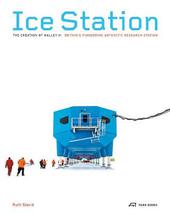
|
Ice Station - The Creation of Halley VI. Britain's Pioneering Antarctic Research Station
Paperback / softback
Main Details
Description
Halley VI Research Station is the first fully re-locatable research station in the world. It was commissioned in 2006 and its unique and innovative structure was the result of an international design competition in collaboration with the Royal Institute of British Architects (RIBA). The research facility is segmented into eight modules, each sitting atop ski-fitted, hydraulic legs that can be individually raised to overcome snow accumulation, allowing the module to be towed independently to a new location. Halley VI is designed by London-based Hugh Broughton Architects and AECOM, a global engineering design firm. The new book tells the story of this exciting piece of architecture in an essay by Ruth Slavid. Around 100 photographs, mostly in colour, plans and diagrams document the various modules of the re-locatable station and its present site. Captions offering comprehensive technical information about the structure complement the images. Photographs are contributed by British photographer James Morris, who has gained much international recognition for his work in architectural and landscape photography.
Reviews"Ice Station" chronicles the creation of Halley VI, the sixth British research station built on the Brunt Ice Shelf in Antarctica since 1956 . To capture the site, photographer James Morris spent hours outside in temperatures that sometimes dropped to -25 degrees. Going to the point where you are alone in the middle of absolutely nothing was quite exciting, in a terrifying kind of way, he says. --Alexandra Wolfe "Wall Street Journal ""
|